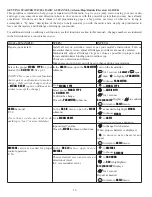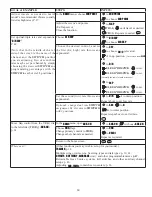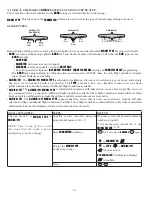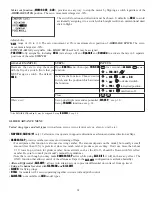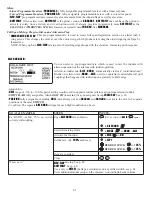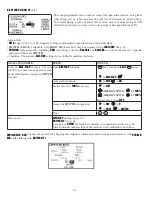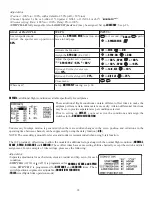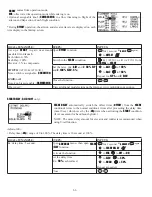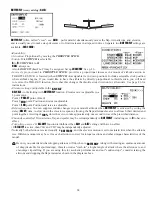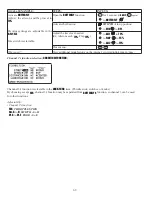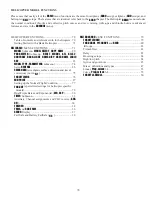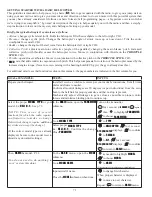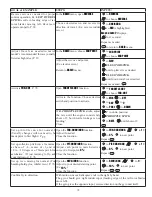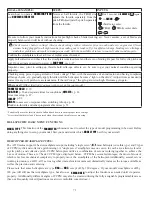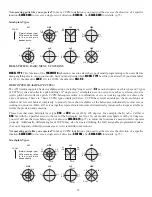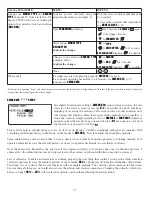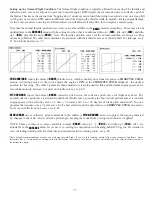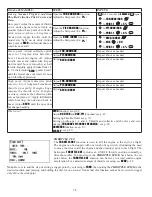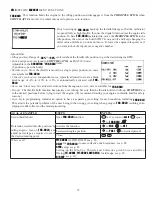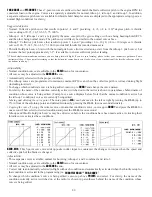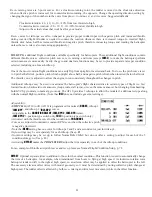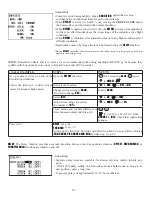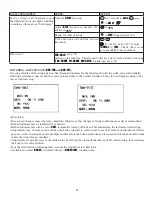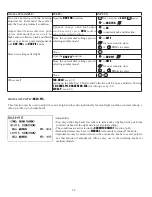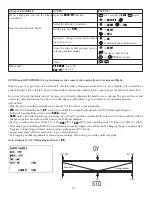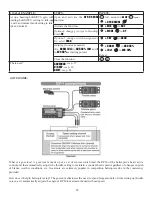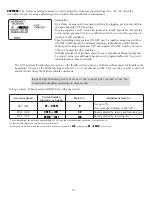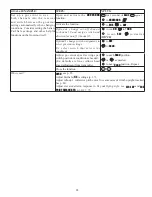
73
GOAL of EXAMPLE:
STEPS:
INPUTS:
Learn how to operate
HOVERING PITCH
and
HOVERING THROTTLE
Notice at half throttle, the
VR(C)
dial
adjusts the throttle separately from the
pitch.
VR(A)
adjusts the pitch separately
from the throttle.
for 1 second.
(If
ADVANCE
,
again.)
C
to
SERVO
.
throttle to center
VR(C)
VR(A)
center dials.
%H VXUH WR IROORZ \RXU PRGHO¶V LQVWUXFWLRQV IRU SUHÀLJKW FKHFNV EODGH WUDFNLQJ HWF 1HYHU DVVXPH D VHW RI EODGHV DUH
properly balanced and will track without checking.
Check receiver battery voltage! Always check voltage with a voltmeter prior to each and every engine start.(Never
DVVXPHEHLQJSOXJJHGLQDOOQLJKWPHDQV\RXUUDGLRJHDULVUHDG\WRÀ\,QVXI¿FLHQWFKDUJHELQGLQJVHUYROLQNDJHV
and other problems can result in a dangerous crash with the possibility of injury to yourself, others and property.
&RQ¿UPWKHVZDVKSODWHLVOHYHODWWUDYHO$GMXVWDUPVLIQHHGHG
Apply full collective and check that the swashplate remained level and there is no binding. Repeat for full cyclic pitch and
roll. If not, adjust as needed to correct in
END POINT
: see p. 27.
Important note: prior to setting up throttle hold, idle-ups, offsets, etc, be sure to get your normal condition operating
properly.
Checking setup prior to going airborne: Check voltage! Then, with the assistance of an instructor, and having completed
all range checks, etc, gradually apply throttle until the helicopter becomes “light on the skids.” Adjust trims as needed to
correct for any roll, pitch, or yaw tendencies. If the tail “wags,” the gyro gain is too high. Decrease gyro gain.
Where next?
(Other functions you may wish to set up for your model.)
THROTTLE HOLD
: P. 79.
SUB-TRIM
p. 36 and separate trims for conditions (
OFFSETS
): p. 82.
Governor setup: p. 87.
IDLE-UP
p. 81.
DELAYs
to ease servo response when switching idle-ups: p. 82.
Rudder-to-throttle and other programmable mixes p. 53.
1
Periodically move the throttle stick to full and back down to ensure proper servo settings.
2
It is critical that dials
A
and
C
be centered when the pitch and throttle curves are setup.
HELI-SPECIFIC BASIC MENU FUNCTIONS
MODEL TYPE
: This function of the
PARAMETER
submenu is used to select the type of model programming to be used. Before
GRLQJDQ\WKLQJHOVHWRVHWXS\RXUPRGHO¿UVW\RXPXVWGHFLGHZKLFK
MODEL TYPE
EHVW¿WV\RXUDLUFUDIW
HELICOPTER SWASHPLATE TYPES:
The
AT10
radios support 8 basic swashplate setups, including "single servo" (
H-1
-most helicopters use this type) and 7 types
of CCPM (cyclic and collective pitch mixing). A "single servo" swashplate uses one servo for each axis: aileron, elevator
(cyclic pitch), and collective pitch. CCPM helicopters utilize a combination of servos working together to achieve the
3 axes of motion. There are 7 basic CCPM types, displayed below. CCPM has several advantages, the most obvious of
which is far less mechanical complexity to properly move the swashplate of the helicopter. Additionally, several servos
working in unison (ex: HR3, all 3 servos together create elevator movement) dramatically increases the torque available as
well as the precision and centering.
Please note that some helicopters are type
HR3
or
HN3
, except off by 180 degrees.
If your model's swashplate is off by
180 you will still use that swashplate type, but also use
SWASH AFR
to adjust the functions as needed until it operates
properly. Additionally, different angles of CCPM may also be created utilizing the fully assignable programmable mixes.
(See our Frequently Asked Questions area at www.radiolink.com.cn/doce/.)

